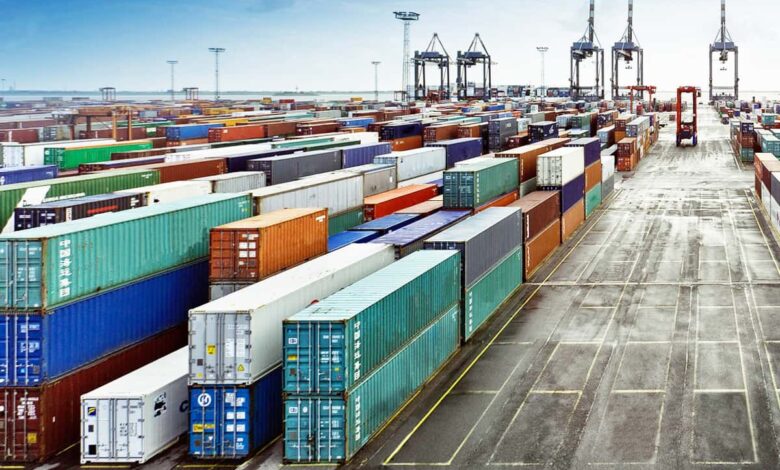India’s imports from Russia doubled to $20.45 billion in April-July period

India’s imports from Russia doubled to $20.45 billion in April-July period
During the period of April to July in the current fiscal year, India’s imports from Russia saw a significant increase, doubling to reach USD 20.45 billion. This surge in imports was primarily driven by higher inbound shipments of crude oil and fertilizers from Russia, as indicated by data from the Indian Ministry of Commerce.
As a result of this increase, Russia has emerged as India’s second-largest source of imports during the first four months of the fiscal year. Comparatively, imports from Russia during the same period in the previous fiscal year amounted to USD 10.42 billion.
This surge in imports from Russia can be attributed to several factors, notably the heightened inbound shipments of crude oil and fertilizers from the country. The share of Russia in India’s oil imports has witnessed a notable increase, rising from less than 1 percent in India’s import portfolio before the onset of the Russia-Ukraine conflict to over 40 percent currently.
These trends reflect the dynamic nature of global trade relationships and the impact of geopolitical developments on trade patterns. The increased imports from Russia underline its growing significance as a trade partner for India, particularly in terms of energy resources and agricultural inputs.
India, ranked as the world’s third-largest importer of crude oil after China and the United States, has capitalized on the opportunity to purchase Russian oil at discounted prices due to Western countries reducing their purchases as a response to Russia’s involvement in the Ukraine conflict.
During the April-July period of the current fiscal year, India’s imports from Russia have surged, reaching USD 20.45 billion, largely due to the favorable pricing. This stands in contrast to some Western countries that chose to decrease their imports from Russia as a form of punitive action following the Ukrainian conflict.
Notably, India’s imports from China have decreased during the same period, amounting to USD 32.7 billion compared to USD 34.55 billion in the corresponding period of the previous year. Imports from the United States and the United Arab Emirates (UAE) have also shown a decline. Imports from the US dropped to USD 14.23 billion from USD 17.16 billion, while imports from the UAE contracted to USD 13.39 billion from USD 18.45 billion in the same April-July timeframe.
Concerning India’s exports, the data reveals a trend of negative growth rates to seven of the top ten export destinations during the period. This indicates a more challenging export environment for Indian goods in some key markets.
These shifts in import and export patterns highlight the intricate interplay of global trade dynamics, geopolitical events, and economic factors that influence the movement of goods between countries.
In the initial four months of the current fiscal year, India’s merchandise exports to several countries, including the US, UAE, China, Singapore, Germany, Bangladesh, and Italy, have witnessed a decline. However, there have been positive growth rates in exports to the UK, Netherlands, and Saudi Arabia during the same period.
This trend of varying export performance reflects a complex combination of factors such as global economic conditions, demand patterns, supply chain disruptions, and market-specific dynamics.
Furthermore, India’s overall merchandise exports faced a contraction of 15.88 percent in July of the ongoing year, marking the sixth consecutive month of decline. The decline can be attributed to a global economic slowdown and reduced shipments in crucial sectors like petroleum, gems, and jewelry.
The challenging export environment underscores the intricate challenges and uncertainties that economies, particularly export-oriented ones, encounter amid shifting global dynamics, trade tensions, and evolving consumer behavior.
In July of the current year, imports to India experienced a decline of 17 percent compared to the same month in the previous year, marking the eighth consecutive month of contraction. The imports reduced from USD 63.77 billion in July 2022 to USD 52.92 billion in July 2023.
This decrease in imports is influenced by a combination of factors, including global economic conditions, supply chain disruptions, and shifts in consumer demand, among others.

As a result of this decline in imports, the trade deficit – which represents the difference between a country’s imports and exports – also narrowed. In July 2023, the trade deficit stood at USD 20.67 billion, compared to USD 25.43 billion during the same month in 2022.
The contraction in both imports and exports and the resultant narrowing of the trade deficit suggest a complex and challenging global trade landscape, with various factors impacting the movement of goods between countries. These trends highlight the economic implications of evolving global dynamics and the resilience required for economies to adapt to such changes.






